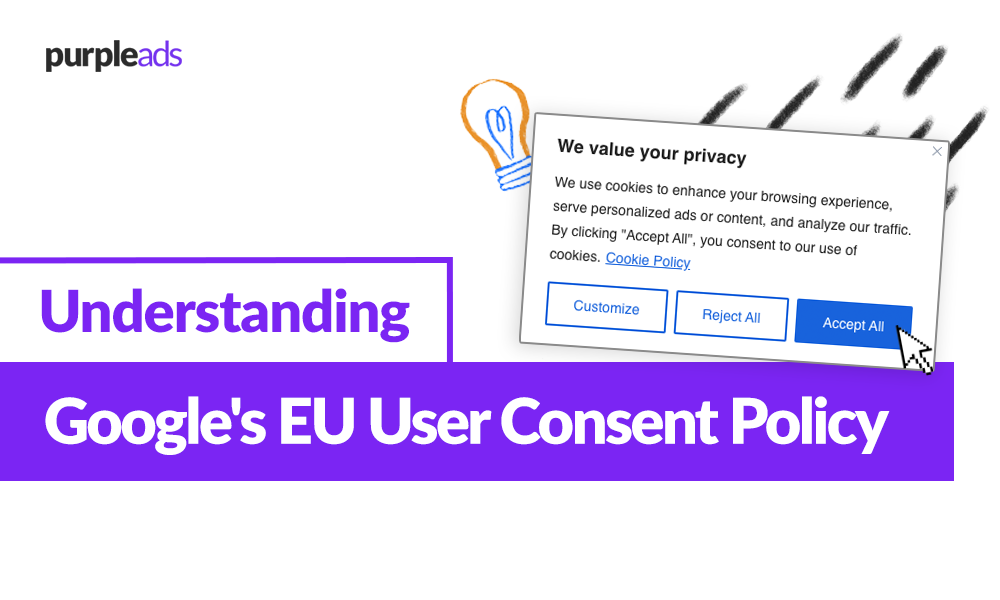The digital advertising landscape in the European Union (EU) is undergoing a significant transformation with the implementation of Google’s updated EU user consent policy. This policy, which aligns with the EU’s General Data Protection Regulation (GDPR) and the upcoming Digital Markets Act (DMA), aims to empower users with greater control over their data and how it’s used for advertising purposes. This article delves into the intricacies of this policy, its implications for advertisers and publishers, and the necessary steps to ensure compliance in 2024 and beyond.
Understanding the Policy’s Core Principles
At the heart of the policy lies the fundamental right of EU users to provide informed and granular consent for the collection, use, and sharing of their personal data for ad personalization. This translates to several key requirements for advertisers and publishers:
- Transparency: Users must be presented with clear and concise information about the data being collected, the purposes for which it will be used, and the parties involved. This includes identifying all third-party ad technology providers who may access or utilize the data.
- Consent Mechanism: A user-friendly and accessible consent management platform (CMP) is crucial. This platform should offer granular options for users to choose the level of consent they wish to provide, ranging from complete acceptance to specific use case permissions.
- Revocation of Consent: Users must be granted the right to easily withdraw their consent at any point. This requires readily available mechanisms within the platform or website/app interface.
- Legal Basis: The policy emphasizes the need for a lawful basis for data processing beyond just consent. This may involve contractual necessity or legitimate interests, depending on the specific context.
Impact on Advertisers and Publishers
The updated policy undoubtedly introduces challenges for both advertisers and publishers operating within the EU:
- Increased Complexity: Implementing a robust CMP and ensuring transparent communication with users adds a layer of complexity to existing workflows.
- Potential Revenue Loss: Users opting out of personalized advertising may lead to decreased reach and ad revenue for publishers.
- Adapting Targeting Strategies: Advertisers may need to adjust their targeting strategies to rely less on personalized data and explore alternative methods like contextual targeting.
Compliance Essentials
To navigate this evolving landscape and remain compliant, here are some crucial steps for advertisers and publishers:
- Conduct a thorough audit: Assess your current data collection practices and identify areas where user consent is required under the policy.
- Implement a compliant CMP: Choose a reputable CMP that adheres to the policy’s guidelines and offers a user-friendly interface for consent management.
- Update privacy policies: Clearly communicate your data collection practices, the purposes for using the data, and the user’s rights regarding consent in your privacy policy.
- Integrate with Google products: Ensure proper integration of your CMP with Google products like Google Tag Manager, Google Analytics, and Google Ads to respect user consent choices and avoid policy violations.
- Seek professional guidance: Consulting with data privacy experts can provide valuable insights and ensure your compliance strategy is robust.
Specific Considerations for Google Products
The updated policy has specific implications for how Google products are used within the EU:
- Google Tag Manager (GTM): GTM should be configured to respect user consent choices obtained through the CMP. This may involve conditional loading of tags based on consent status.
- Google Analytics (GA): GA settings need to be adjusted to ensure data collection only occurs with valid user consent. Consider implementing features like IP anonymization and data retention limitations.
- Google Ads: Targeting options within Google Ads may need to be modified to prioritize contextual targeting and audience segments built using first-party data with appropriate consent.
Looking Ahead: Embracing Transparency and Building Trust
While the updated policy presents challenges, it also presents an opportunity for advertisers and publishers to build stronger relationships with users by prioritizing transparency and data privacy. By embracing these principles and diligently adhering to the policy’s requirements, businesses can navigate this evolving landscape, ensure compliance, and maintain a sustainable advertising presence within the EU.
Additional Points to Consider
- The policy is still evolving, and further updates or clarifications may be issued by Google. Staying informed about any changes is crucial.
- The impact of the policy on specific business models and revenue streams will vary. Exploring alternative monetization strategies may be necessary for some publishers.
- Collaboration between advertisers, publishers, and technology providers is essential to develop efficient and user-centric solutions for managing consent and delivering targeted advertising within the new regulatory framework.
By understanding the intricacies of the policy, taking proactive steps towards compliance, and prioritizing user trust, advertisers and publishers can adapt and thrive in the evolving landscape of EU data privacy regulations.

